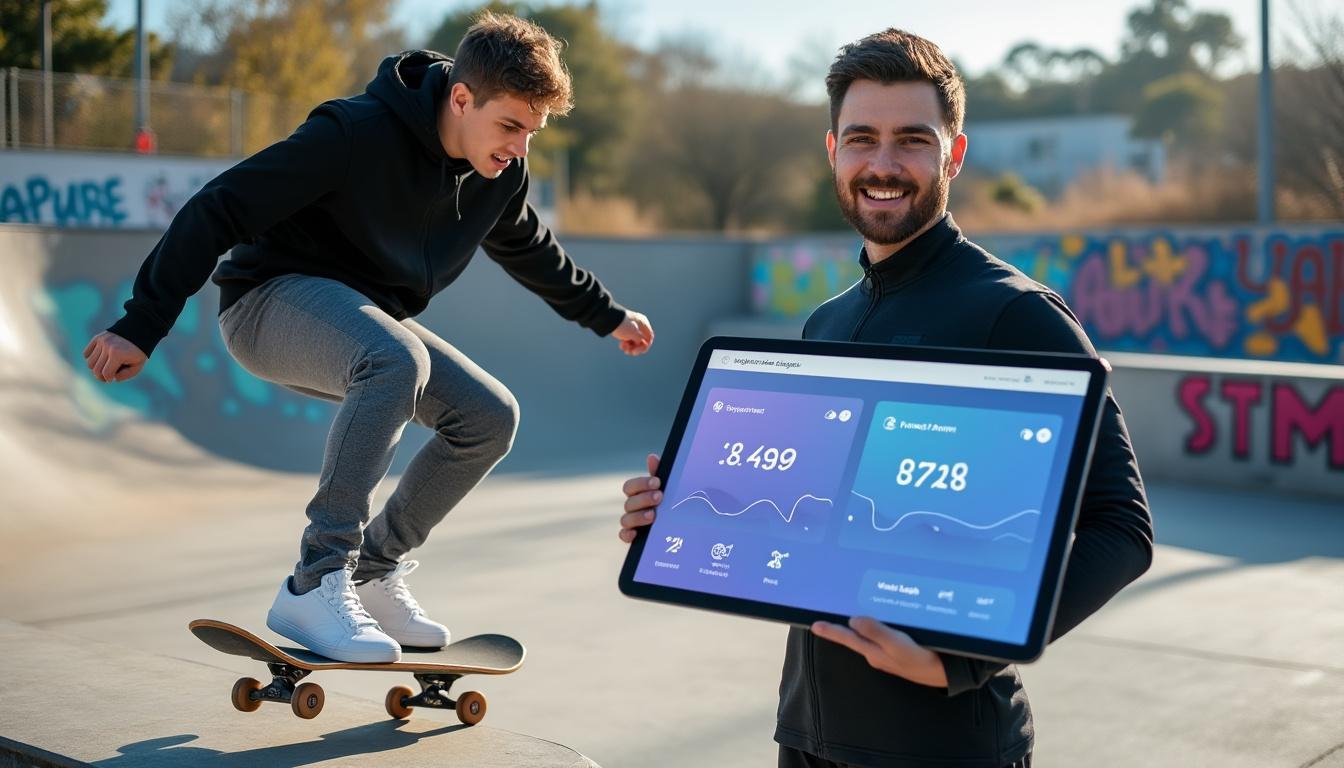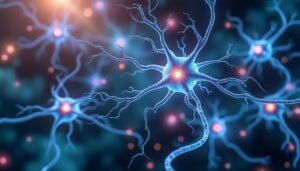In an era where data streams from wearables, apps, and smart devices converge, artificial intelligence (AI) is transforming weight loss from a generic diet plan into a precise, adaptive journey. By 2025, individuals can leverage AI to translate daily activity, sleep patterns, metabolic signals, and dietary choices into personalized guidance that evolves as they progress. This article explores how AI reshapes weight management, from initial assessment to sustained habit formation, by weaving together behavioral science, real-time feedback, and ethical safeguards. Readers will discover practical pathways, case-inspired scenarios, and concrete tools that blend technology with human-centered support. The objective is not a one-size-fits-all algorithm but a flexible, evidence-informed framework that respects individual differences, preferences, and lifestyles. As AI-driven solutions become more accessible, the field is moving toward more transparent outcomes, richer data integrations, and safer innovation that empowers users rather than overwhelms them. The following sections dissect this ecosystem into actionable layers, each anchored by examples, data considerations, and testable strategies that readers can adapt to their own goals.
- AI personalization starts with data fusion: wellness wearables, nutrition apps, and metabolism tools feed adaptive plans.
- Behavioral coaching with AI augments motivation and accountability beyond traditional programs.
- Real-time feedback from metabolic signals helps calibrate energy balance and exercise intensity.
- Ethical and privacy considerations shape safe adoption and long-term trust in AI tools.
- Practical pathways mix evidence-based apps like Noom, Fitbit, Lumen, Lose It!, WW, MyFitnessPal, Calorie Mama AI, Yazio, Habit AI, and FitGenie for holistic management.
Key takeaways include the power of data-driven personalization, the necessity of a balanced lifestyle for sustainable results, and the importance of choosing tools that align with individual goals and values. For readers seeking a tangible starting point, consider building a simple AI-assisted plan that pairs a credible diet app with a wearable-enabled activity baseline, then progressively introduces coaching nudges and metabolism feedback as comfort with the system grows. Publicly available resources and discussions—such as detailed glossaries and evolving AI terminology—can help users understand how these tools operate and what to expect in practice. See a glossary of AI terms and a guide to key AI concepts for foundational context. Real-world case studies and cross-app comparisons can be found through diverse sources, including deep dives into GDPR considerations and data governance for AI-enabled health tools. See, for example, GDPR challenges in AI-enabled health tech.
AI-Powered Personalization for Effective Weight Loss
Personalization is the cornerstone of modern weight management. AI systems ingest data from multiple streams—diet-tracking apps like Noom, Lose It!, WW (Weight Watchers), and MyFitnessPal, as well as wearable metrics from devices such as Fitbit and metabolic signals from tools like Lumen. The goal is to move beyond generic guidelines toward recommendations that reflect an individual’s physiology, daily routine, food preferences, and social context. In practice, this means translating raw numbers into meaningful actions: a suggested daily calorie target adjusts for sleep quality and stress; a weekly exercise plan shifts in response to week-to-week changes in activity levels; and a grocery list aligns with preferred cuisines while meeting micronutrient targets. Embracing this realism is essential because energy balance is a dynamic process: what works for a person on a Monday may need modification on a busy Friday.
- Data integration is the engine driving personalization. Sources include wearables (steps, heart rate), dietary entries, and metabolic signals.
- Adaptive algorithms recalibrate goals weekly or daily, accounting for plateaus and life events.
- Behavioral science supports habit formation. AI coaching nudges users toward small, sustainable steps rather than dramatic shifts.
- Tool selection matters: opt for apps with robust data privacy, transparent AI logic, and clear user consent flows.
- Ethical considerations ensure that personalization respects autonomy, avoids bias, and supports informed decision-making.
| Data Source | AI Technique | Primary Benefit | Representative Tool |
|---|---|---|---|
| Wearable metrics (steps, HR, sleep) | Time-series forecasting and anomaly detection | Realistic activity targets; early detection of fatigue | Fitbit, Apple Health integrations |
| Dietary logging (calorie, macros) | Nutritional pattern mining; portion-size estimation | Tailored meal suggestions; better macro balance | MyFitnessPal, Lose It! |
| Metabolic signals (e.g., resting energy expenditure) | Personalized energy budgeting; dynamic calorie targets | Prevents under- or over-eating; supports lean mass | Lumen, metabolic wearables |
| Behavioral data (mood, stress, routines) | Context-aware recommendations | Improved adherence through feasible plans | Habit AI, WW coaching features |
When designing AI-driven plans, it helps to map out the user journey with practical steps. Start by establishing the baseline: collect 1–2 weeks of data from a chosen wearable and a preferred diet-tracking app. Then set an initial target that balances caloric deficit with sustainable energy and mood: a moderate 300–500 kcal daily deficit is a common starting point for many adults. The AI system should monitor progress and flag deviations—like a sudden drop in sleep quality or a spike in late-night snacking—so the plan can adapt promptly. Users must also understand the limits of AI personalization. While algorithms can reveal patterns and optimize routines, human oversight remains essential, especially around medical conditions, medication interactions, and personal preferences. For readers seeking to advance their understanding, a comprehensive glossary and terminology primer can help decode AI recommendations and their rationale. See articles on key AI terms and concepts for deeper insight, and explore governance considerations that accompany AI-assisted health solutions.
Case-in-point: a 2025 survey of AI-guided weight management programs indicates that personalization can improve adherence by 15–25% when paired with a human coaching element. The combination of digital nudges and human support tends to yield the strongest results. For those who want to explore practical integrations, several apps stand out for their interoperability and user experience. Noom emphasizes behavior change coaching; Fitbit provides reliable activity metrics; Lumen adds metabolism feedback; and MyFitnessPal, Lose It!, WW, Yazio, and Calorie Mama AI offer robust food-tracking ecosystems. To see how these tools compare in real-world settings, review user experiences and device ecosystems across platforms, including AI terms and concepts and AI-enabled content for health apps.
Developing an AI-based personalization system also means addressing practical constraints. Data sparsity, sensor inaccuracies, and user fatigue can erode effectiveness. A pragmatic approach is to combine high-quality baselines with conservative updates, ensuring plans remain feasible and enjoyable. The use of privacy-preserving techniques, such as data minimization and transparent consent, helps build trust and long-term engagement. For readers exploring governance and risk management, several online resources outline how to balance innovation with responsibility, including detailed discussions on GDPR compliance in modern AI workflows. See GDPR challenges in LLM-based health tools.
To illustrate the practical path, consider a scenario where AI helps tailor a 12-week progression: starting with a 15-minute daily walk, moving toward 45–60 minutes of mixed activity, with weekly adjustments based on energy levels and sleep. This example demonstrates how personalization translates into tangible, incremental steps rather than abrupt shifts, a key to sustainable weight loss.
< otoimage prompt=”A futuristic dashboard showing AI-driven weight loss personalization, with wearable data, nutrition analytics, and progress charts.” >
Integrating Digital Diet Tools and Calorie Management with AI
Dietary tracking is central to any weight-loss plan because it anchors energy balance in daily choices. AI enhances this process by interpreting foods and meals, proposing adjustments, and aligning intake with activity. The ecosystem thrives when users select diet platforms that synergize with wearables, enabling seamless data flows and actionable feedback. Apps such as Noom, Lose It!, WW, and MyFitnessPal have cultivated large user communities and robust data pipelines, which AI can leverage to tailor suggestions and detect patterns across meals, timing, and cravings. In parallel, image-based recognition tools like Calorie Mama AI and comprehensive nutrition platforms such as Yazio contribute to more accurate logging, reducing the friction of manual entry. The combined effect is a more precise energy budget and richer context for daily decisions. Importantly, users should prioritize tools with clear privacy controls, explicit data-sharing terms, and intuitive user experiences to avoid burnout and disengagement.
- Diet-app integration streamlines logging and reduces error-prone manual entry.
- AI-driven meal suggestions consider personal tastes, budget, and cultural preferences.
- Real-time feedback helps users stay on track during social events or travel.
- Cross-platform interoperability ensures data continuity across devices.
- Privacy and consent play a central role in trust and long-term use.
| Tool/App | AI Capability | Weight Loss Impact | Considerations |
|---|---|---|---|
| Noom | Behavioral coaching and personalized plans | Improved adherence through cognitive strategies | Cost and data privacy preferences |
| MyFitnessPal | Calorie tracking; macro balance insights | More accurate energy budget; increased meal awareness | UI complexity; requires consistent logging |
| Lose It! | AI-assisted meal logging and suggestions | Fueling progress with simplified entries | Data sharing with partners; subscription impact |
| Calorie Mama AI | Image-based food recognition | Faster logging; reduces user fatigue | May misclassify complex dishes; verify portions |
In practice, weight-loss success often depends on the alignment between diet tools and lifestyle realities. A practical approach is to choose one or two apps that offer strong integration with wearable devices and then layer AI coaching on top. The aim is to create a feedback loop where meals, activity, and mood inform daily targets. For users seeking deeper technical context, exploring AI terminology and health data governance helps demystify how these systems operate and how data flows between apps and devices. A useful starting point is a glossary of AI terms that clarifies concepts like reinforcement learning, user modeling, and personalization strategies. See AI glossary 2 and AI glossary for foundations. In addition, practical governance guidance can help organizations balance innovation with privacy, compliance, and safety.
For readers who appreciate concrete planning, a weekly framework can be valuable. Start with a baseline week of logging; identify the top three dietary patterns contributing to energy surplus; experiment with AI-generated substitutions that preserve flavor and cultural relevance; and track outcomes across appetite, energy, and mood. Real-world data show that users who engage in AI-powered diet coaching experience higher consistency than those relying on self-directed plans alone. The next step is to integrate metabolism signals from devices like Lumen when feasible, and to monitor how these signals interact with dietary choices and training. This holistic approach helps ensure that energy intake and expenditure stay aligned with personal goals without sacrificing wellbeing.
For those who want to explore credible resources on AI-driven diet tools, consider consulting AI terminology primers, and practical guides on AI in wellness that emphasize user-centric design and safety. The combination of robust data sources, human-centered coaching, and transparent practices lays the groundwork for reliable, enjoyable weight-management journeys. For further reading on AI governance and health technology, see the GDPR-focused article mentioned earlier and related explorations of AI in health tech. A broader perspective on AI-enabled health coaching can be found in resources that discuss ethical deployment and consumer protection in digital health ecosystems.
AI Coaching and Behavioral Change for Sustained Weight Loss
Behavioral change is where AI meets psychology. Digital coaching platforms powered by artificial intelligence translate complex behavioral data into actionable steps. The resulting “micro-actions” help individuals shift routines, manage cravings, and maintain motivation over months and years. In practice, AI-enabled coaching complements human guidance by offering timely nudges, reflective prompts, and feedback loops that reinforce healthier habits. The integration of cognitive-behavioral strategies with data-driven insights makes it possible to tailor motivational prompts to individual personality traits, mood states, and life contexts. A growing body of evidence suggests that hybrid models—AI-supported coaching combined with occasional human interaction—yield superior adherence and weight-loss outcomes compared to purely automated or entirely human-led approaches. This synergy can be particularly beneficial for users who face emotional or environmental barriers to change.
- AI coaching adapts messaging to the user’s readiness to change and personal preferences.
- Goal-setting becomes dynamic, with weekly recalibrations based on progress and setbacks.
- Behavioral prompts cover planning, stress management, and social situations that impact eating.
- Human coaching remains essential for complex cases, accountability, and empathy-driven guidance.
- Regular ethical reviews ensure that AI nudges are supportive rather than coercive.
| Coaching Modality | AI Capability | Impact on Adherence | Key Risks |
|---|---|---|---|
| Automated goal setting | Personalized target adjustments | Higher consistency when targets match lifestyle | Over-reliance; drift from personal values |
| Behavioral nudges | Context-aware prompting (time, location, mood) | Improved temptation resistance and planning | Potential notification fatigue |
| Feedback loops | Progress analytics; motivational messaging | Reinforces long-term habits | Misinterpretation of anomalies; data noise |
| Hybrid human-AI coaching | Combined empathy and data insights | Highest adherence in diverse populations | Resource intensity; access disparities |
In the 2025 landscape, AI coaching is increasingly capable of personalizing motivational strategies. Yet the strongest outcomes arise when AI supports human coaches rather than replacing them. Case examples from health-tech programs demonstrate that users who engage with hybrid coaching report better routine establishment, reduced emotional eating episodes, and higher confidence in sustaining weight loss over time. To deepen understanding, readers can explore AI-focused health literature and practical coaching frameworks that emphasize ethical considerations, transparency, and user empowerment. See AI for engaging coaching content and explorations of AI and cognition for broader context. The goal is to create engagement that respects autonomy, supports informed decision-making, and delivers meaningful improvements in health behaviors.
When implementing AI coaching, developers should ensure sensitivity to individual differences, such as cultural food practices, socioeconomic constraints, and accessibility needs. The best systems present a menu of choices and allow users to opt into the level of support they receive. They also provide clear explanations for recommendations, so users understand why particular nudges are suggested. This transparency fosters trust and increases the likelihood of sustained engagement. For practical resources related to AI terminology and health-tech ethics, consult the AI glossaries and governance guidelines linked in the previous section. Together, these elements form a foundation for coaching that is both effective and ethically sound.
Wearable Tech, Metabolic Feedback, and Real-Time Adaptation
Wearable devices are the arteries of AI-driven weight loss. They supply data on physical activity, heart rate, sleep, and, in some cases, metabolic signals. When paired with AI, these inputs become a real-time feedback loop that guides both daily decisions and longer-term strategy. A common pattern involves syncing step counts and intensity with sleep quality; if fatigue or poor sleep signals a potential overreach, the AI plan dampens the intensity or adjusts the weekly goals. Metabolic feedback, including resting energy expenditure and substrate utilization proxies, helps calibrate energy targets to individual physiology—an important consideration for preventing plateaus and preserving lean mass. This adaptive approach is especially valuable in 2025 as consumer devices become more capable, more affordable, and more integrated with health platforms.
- Real-time feedback keeps plans aligned with current energy needs and recovery capacity.
- Adaptive pacing reduces injury risk and improves long-term adherence.
- Metabolic signals support precision in calorie budgeting, beyond one-size-fits-all targets.
- Data privacy and device interoperability remain critical considerations.
- Educational content helps users interpret metrics and translate them into actions.
| Wearable Tech | Data Type | AI Output | Operational Benefit |
|---|---|---|---|
| Fitbit | Steps, HR, sleep stages | Activity-based targets; fatigue alerts | Prevents overtraining; supports sustainable progression |
| Lumen | Metabolic fuel mix (carbs vs fats) | Dietary adjustments to optimize energy utilization | Sharper dietary alignment with metabolism |
| Other wearables | Heartbeat variability; recovery scores | Recovery-based workout pacing | Balanced training loads; reduces burnout |
In 2025, the synergy between wearables and AI accelerates practical decision-making. Users can adjust meal timing, carbohydrate intake, and activity types based on real-time signals rather than static plans. The challenge lies in translating abstract metrics into simple actions. A practical approach is to define a small set of “if-then” rules that trigger adjustments. For example, if sleep dips below a threshold for three consecutive nights, the AI can temporarily reduce planned cardio volume and emphasize restorative activities such as walking, mobility work, or light resistance training. Pairing these rules with user-friendly dashboards helps individuals remain engaged without feeling overwhelmed. For readers who want to dig deeper into the theory behind metabolic feedback and AI integration, the linked resources at the end of the article provide broader context on AI methods and healthcare data practices. Transparency about how data is used and the value it provides is essential for sustained participation and trust in AI-guided weight management.
Case example: harnessing AI with skateboard-based activity illustrates a practical blend of high-intensity movement and metabolic feedback. A mid-life individual weighing 120 kg and 173 cm tall can use AI-enabled planning to structure skateboarding sessions, adjust calorie intake, and monitor recovery. The plan evolves from 30-minute sessions to longer durations as tolerance improves, while the AI system adjusts nutrition and rest days to prevent injury and support gradual weight loss. While this is a stylized example, it reflects a broader truth: AI-powered systems work best when they accommodate diverse activities and real-life constraints, turning a hobby into a healthy, sustainable path toward weight management. For readers interested in practical governance and cross-domain insights, explore additional AI-health resources and governance discussions via the linked articles and glossaries.
Practical Pathways, Case Studies, and Safety in 2025
The practical pathway to effective weight loss with AI emphasizes layered approaches: personalization, diet optimization, behavioral coaching, wearable-enabled feedback, and safety considerations. A practical plan is to blend evidence-based exercise like walking, cycling, and resistance work with AI-derived diet and behavior strategies. The safety dimension includes medical consultation prior to starting any new regimen, especially for individuals with pre-existing conditions, as well as frictionless opt-outs and clear data-sharing choices. Real-world plans often start with a baseline assessment and then introduce progressive milestones. By 2025, case studies demonstrate that AI can support complex trajectories, provided the plan remains human-centered, adaptable, and privacy-conscious. Readers may want to experiment with a phased approach: begin with baseline data collection, add AI-guided dietary adjustments, and finally integrate AI coaching to support habit formation over weeks and months. The combined effect is often a robust framework capable of sustaining weight loss through diverse life circumstances.
- Baseline data collection establishes a reliable starting point for AI-driven plans.
- Phased integration lowers risk and reduces overwhelm for users new to AI tools.
- Hybrid coaching infrastructure leverages both technology and human empathy.
- Privacy controls and consent drive trust and long-term engagement.
- Real-world case studies highlight practical adaptations, including hobby-based activity like skateboarding.
| Case Component | AI Role | Practical Outcome | Notes |
|---|---|---|---|
| Baseline assessment | Integrates wearable data and diet logs | Establishes initial targets | Must be interpreted with clinician input if needed |
| 12-week progression | Dynamic goal updates; adaptive activity plan | Gradual weight reduction with improved adherence | Adjusts for fatigue and life events |
| Activity integration (e.g., skateboarding) | Activity-specific energy budgeting | Balanced energy expenditure; safer progression | Safety priorities and protective gear emphasized |
Case-specific planning, including a hypothetical weight-loss journey via skateboarding, demonstrates how AI can tailor a path that respects body mechanics and safety while aiming for meaningful loss. In this example—an individual with a mass of 120 kg and a height of 173 cm seeking to lose 30 kg—AI-assisted planning covers calorie deficits, progressive activity, and recovery cycles. The plan accounts for the Basal Metabolic Rate (BMR) and daily energy expenditure, suggesting a cautious deficit of 500–1000 calories per day to target a weekly loss of around 0.5–1 kg. A practical schedule might include at least an hour of skateboarding on most days, complemented by walking or cycling on off days, and a nutrition plan that prioritizes lean proteins, vegetables, and whole grains while limiting added sugars and processed foods. It is crucial to monitor progress, adjust for plateaus, and ensure adequate sleep and stress management to sustain results over time. Readers should consult healthcare providers to tailor plans to their unique medical histories and to determine any necessary precautions before starting such an exercise-intensive program. For additional background on AI-enabled health coaching ethics and safety, see the linked AI governance and health-terms resources in the earlier sections.
To summarize practical pathways, combine the following with AI-enabled support: choose a credible diet platform that aligns with your preferences, pair it with a reliable wearable, and add AI coaching for habit formation. Maintain a regular, varied exercise routine that includes strength training to preserve lean mass and support metabolic health. Track sleep, stress, and mood as they influence appetite and energy. Leverage the insights from AI to adjust plans in response to life events, ensuring the approach remains sustainable and enjoyable. The goal is not a single perfect plan but a resilient framework that evolves with you, leveraging the best of technology while keeping human needs at the center. For ongoing education on AI terminology and ethical considerations, consult the resources linked in this article and consult the broader AI literature that discusses responsible innovation in health technology.

FAQ
What is the role of AI in weight loss, and can it replace a clinician?
AI assists by personalizing plans, tracking data, and offering behavioral coaching. It is not a substitute for medical advice or clinical oversight, especially for individuals with medical conditions. Use AI as a support tool alongside professional guidance.
Which apps and devices are most effective for AI-driven weight loss in 2025?
Popular ecosystems include Noom, Fitbit, Lumen, Lose It!, WW, MyFitnessPal, Calorie Mama AI, Yazio, Habit AI, and FitGenie. Effectiveness depends on data integration quality, user engagement, and alignment with personal goals.
How should I begin integrating AI tools into my weight loss plan?
Start with a baseline: choose a diet app and a wearable, ensure privacy settings are clear, and enroll in an AI coaching feature if available. Progressively add more tools as you gain comfort and confidence.
What are the safety considerations when using AI-powered weight-loss tools?
Consult a healthcare professional if you have medical conditions, monitor for data privacy concerns, and ensure you can opt out of data sharing. Prefer tools with transparent AI explanations and limit sensitive data exposure.




